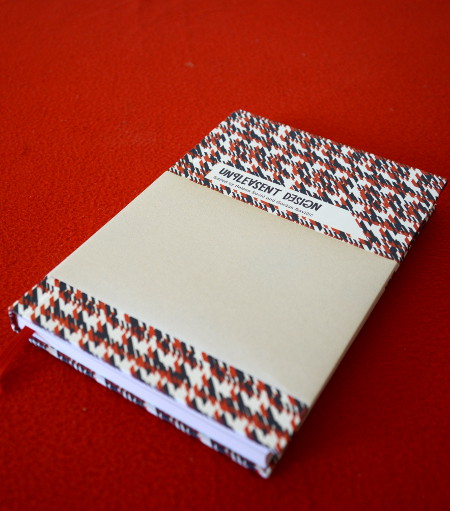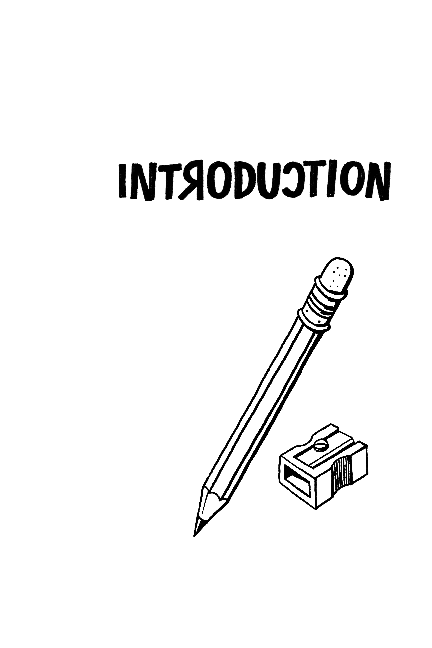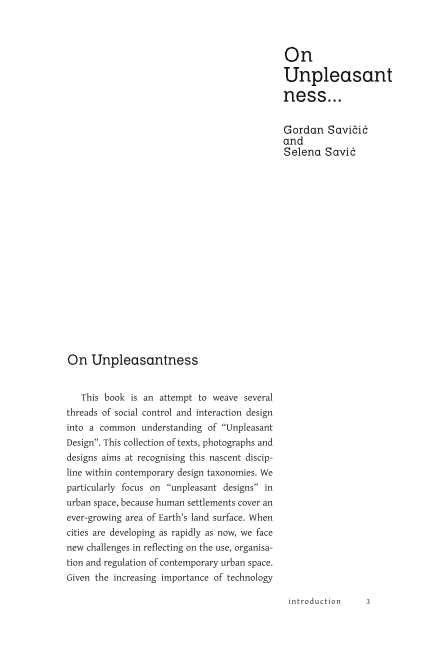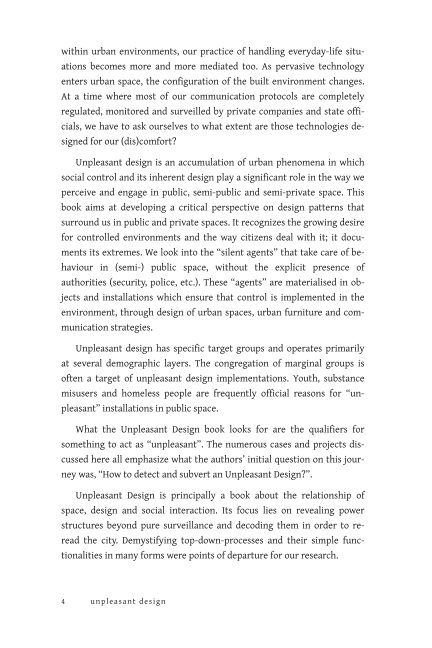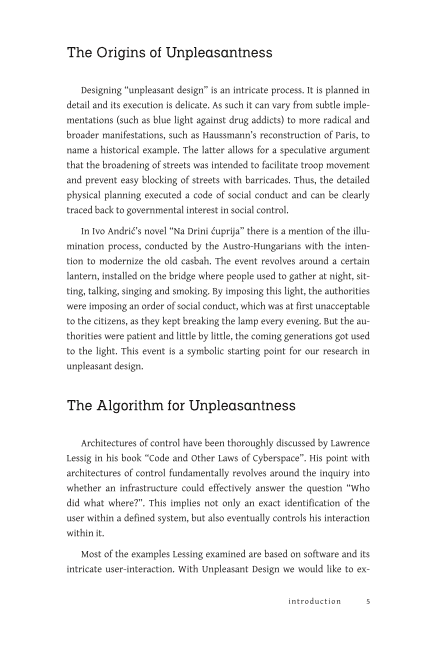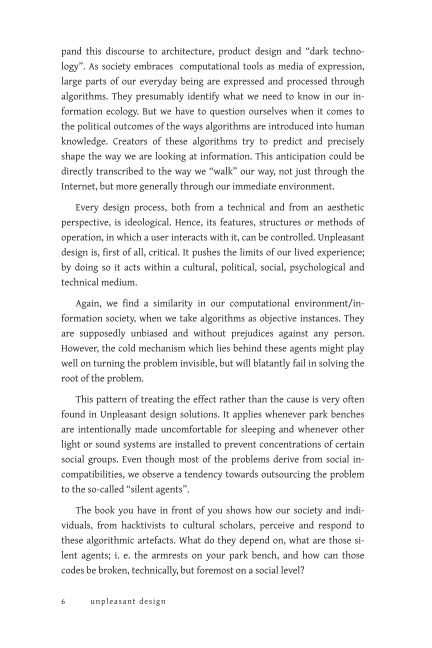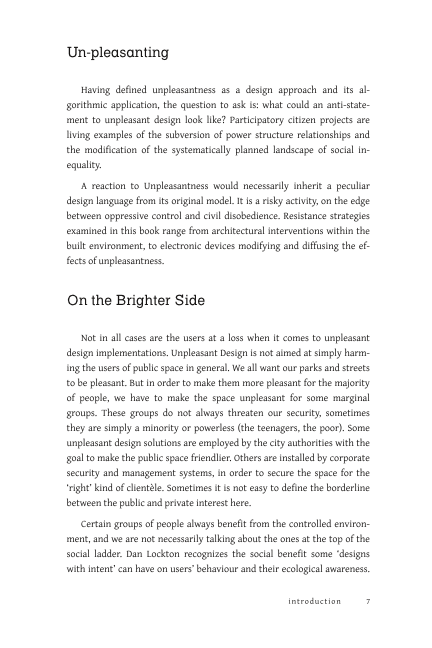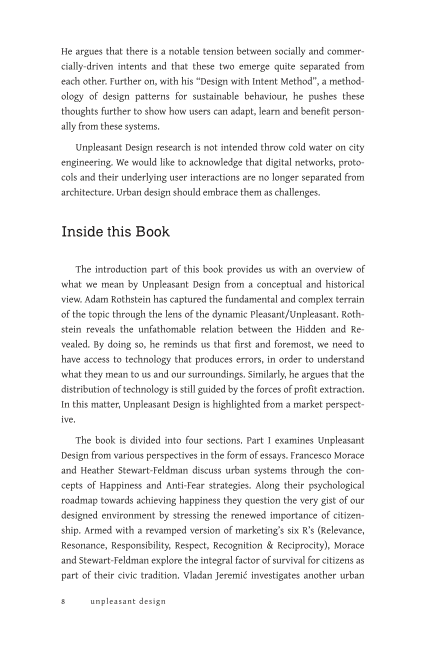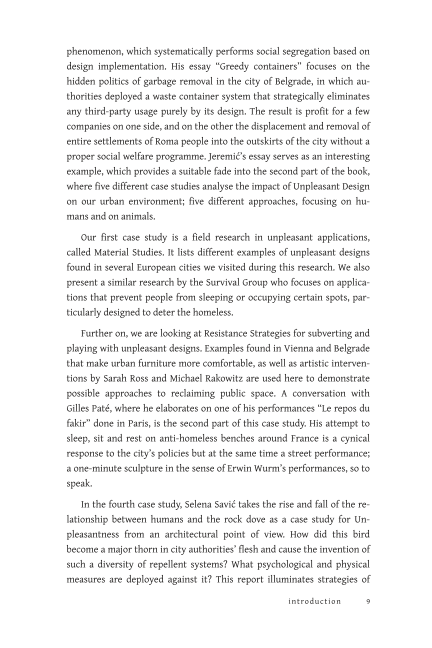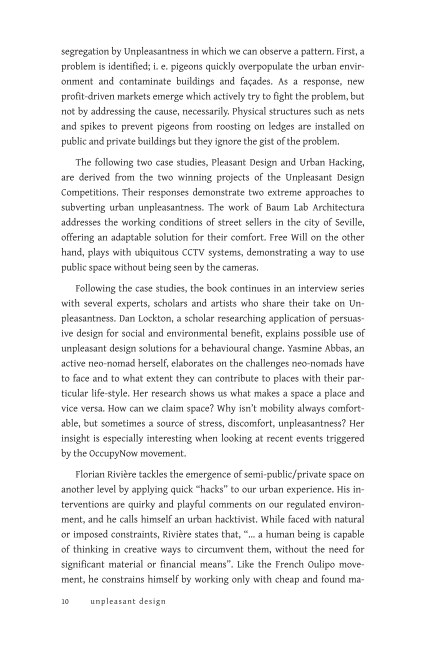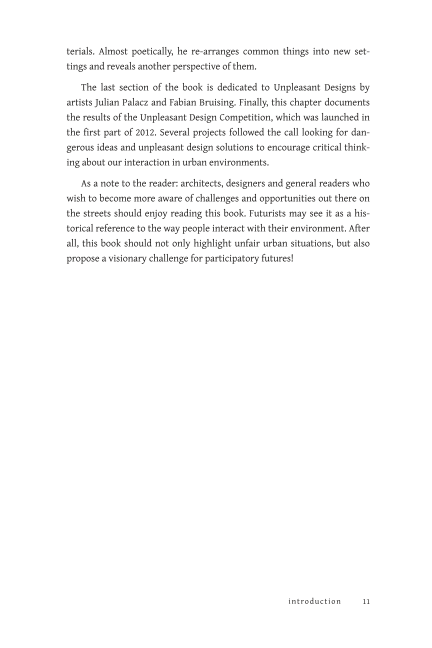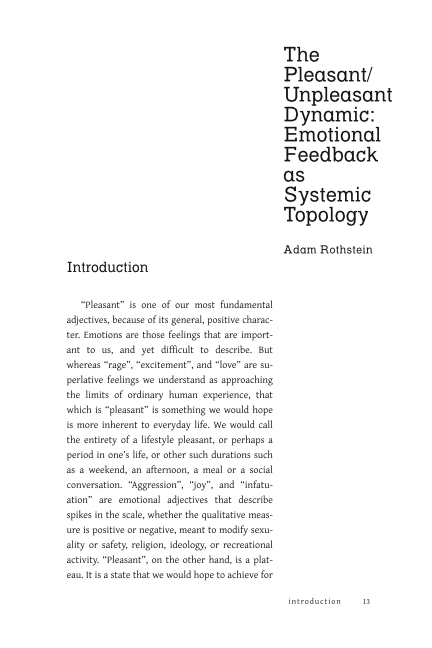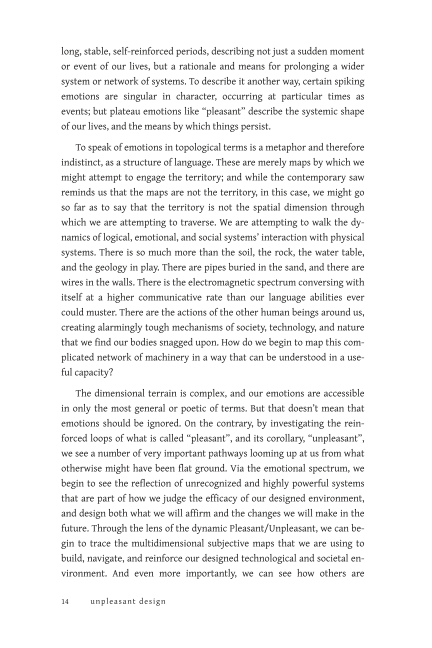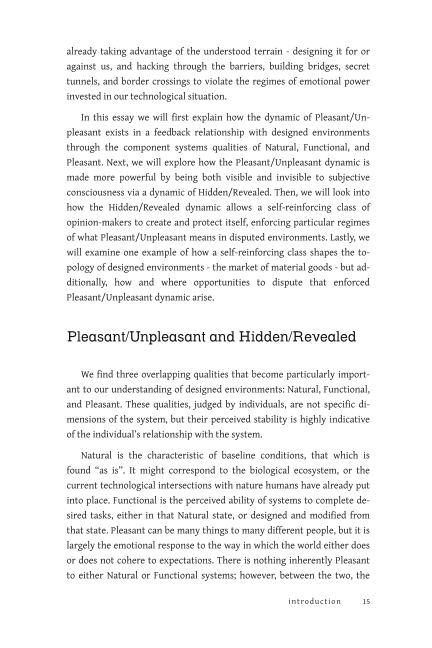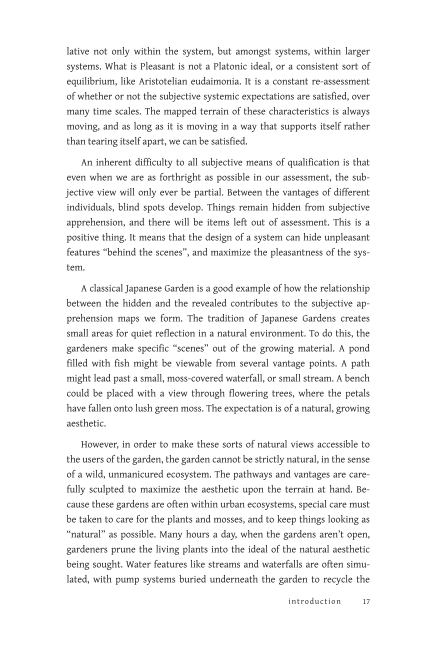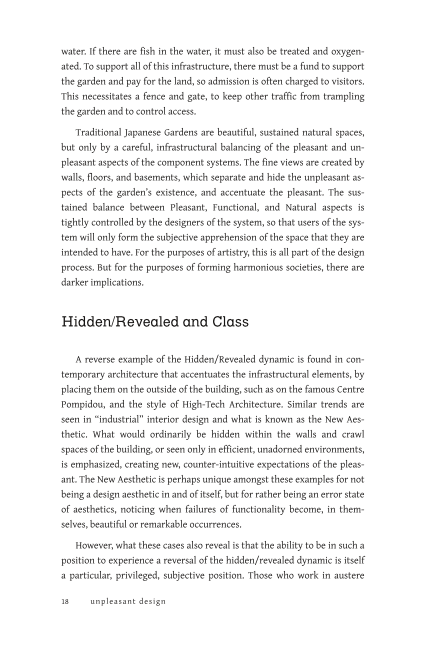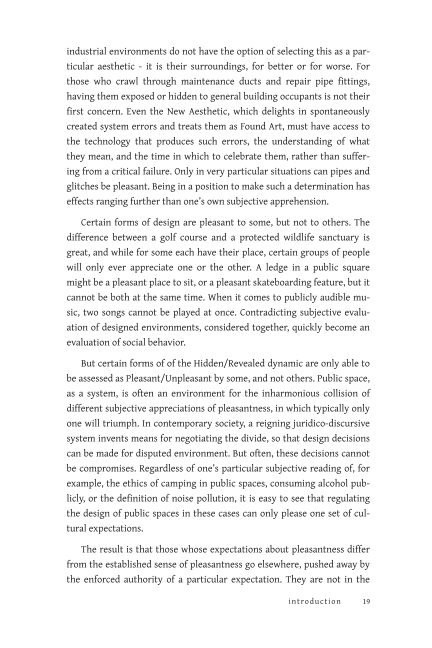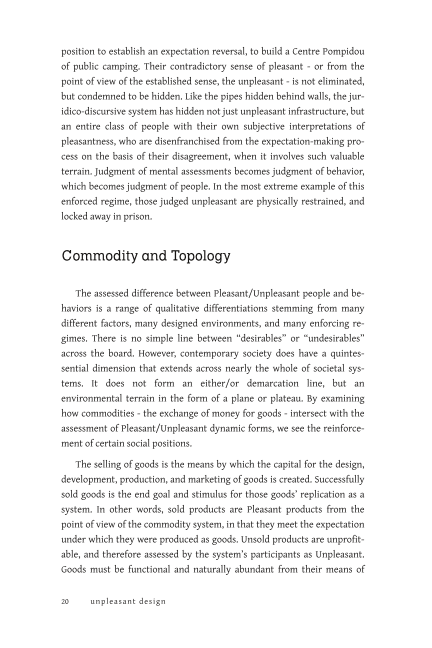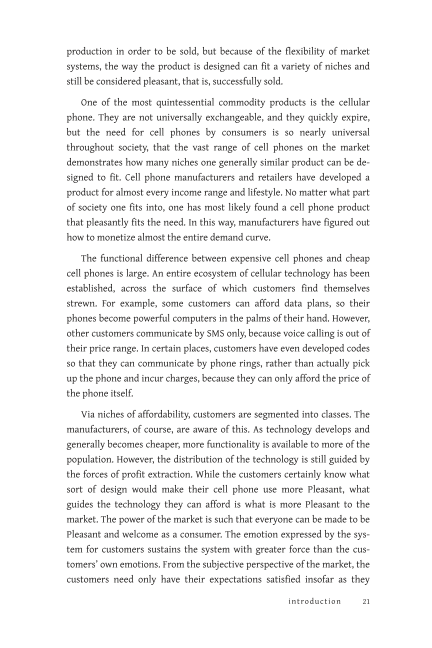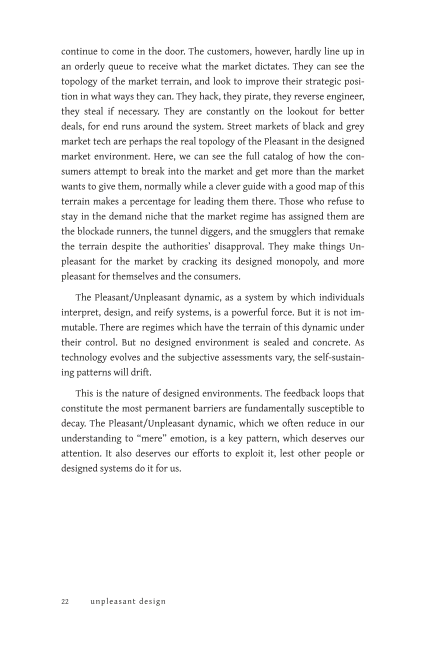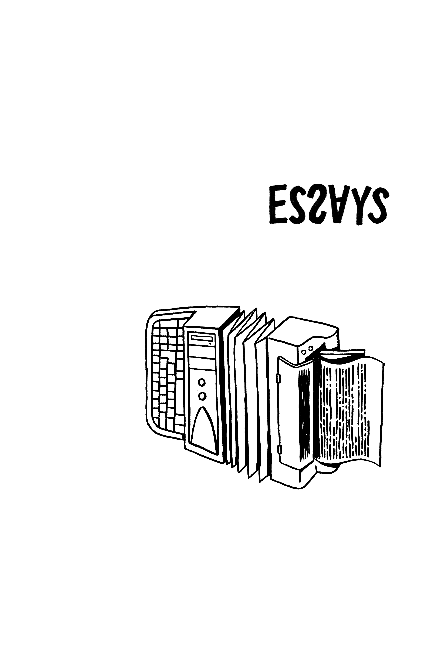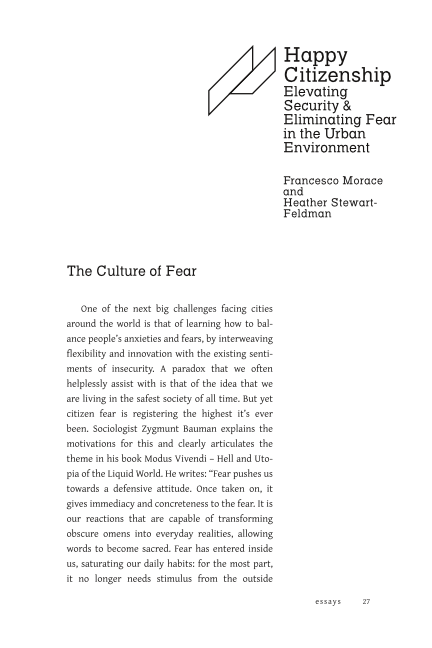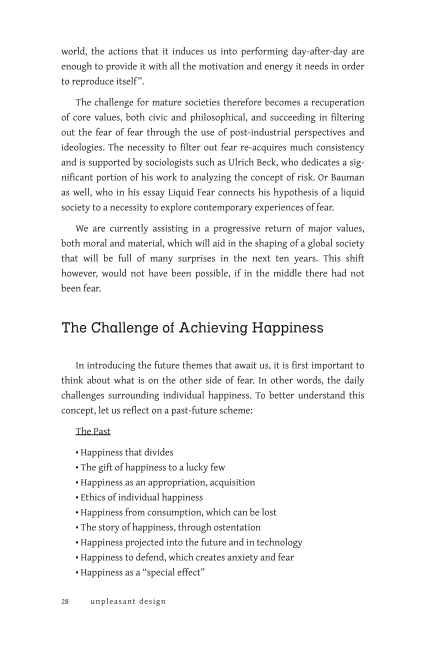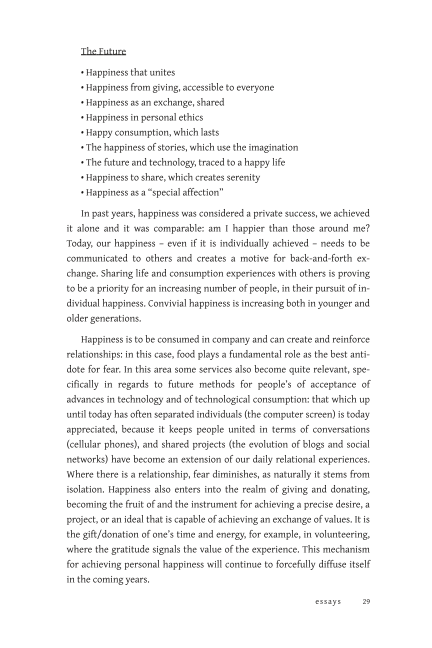Author Archives: selena
asocial benches
For the same reason benches got handles, a new design of very short benches is introduced. These benches can fit only one person, so they prevent sleeping in public space. They are usually found in groups of three or four, presenting an image of a gathering and socialising, while actually keeping people away from each other.
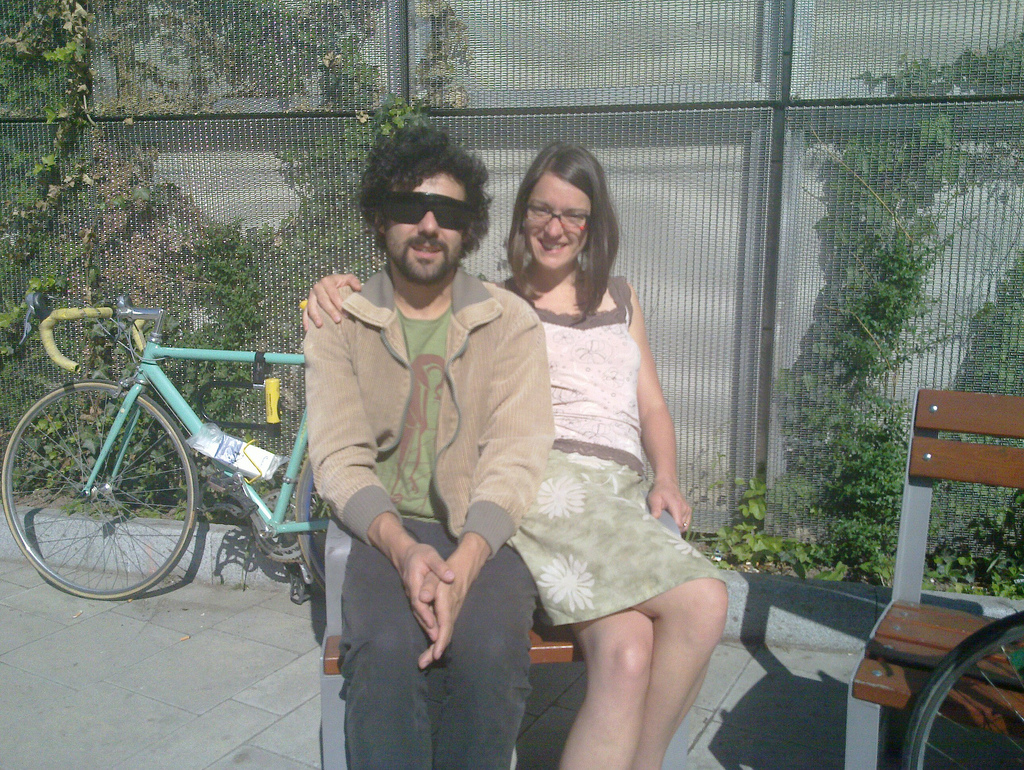
An attempt of sitting on a '1 and 1/2' bench together; Vienna, May 2011
no-sleeping bench
Old benches in parks used to be put there for people to sit together, so that more than 2 or 3 persons could use them at the same time. But then, people could also sleep on them, cause their average length was only a little shorter than a real bed.
In the past 10 years, there is a tendency to install benches with handles in parks, at bus and train stations. The space between the handles is enough for only one person, so people sitting together on the bench are separated by handles. This way, a body of an adult person could not fit to lay down. Because the presence of homeless people in city centres is less and less tolerated, this became a very popular solution.
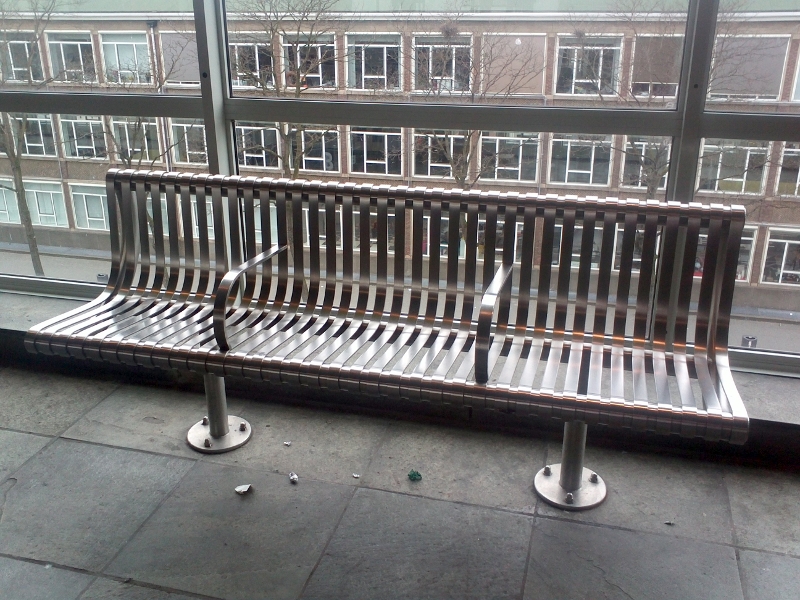
All metro stations in Rotterdam are furnished with this type of bench: cold metal and handles; Rotterdam, March 2012
interventionista
dead pixel art
Recently most European cities have been invaded by large scale commercial displays which got shamelessly embedded into buildings and façades. Their main purpose is to illuminate the visual cortex of passers-bys with brands, advertisements and short excitations. During the last decade artists and designers have been encouraged to produce content for those screens to re-appropriate this quasi-private space. Those attempts hardly ever have gotten more exciting than being purely aesthetic and decorative versions of already existing screensavers and visualizations. Other artistic strategies include attacking the gist of those LED walls.

Since most of those media façades consist of a huge multiplexed grid of single controlled LEDs, their control is based on a high-frequency pulse which can be interrupted by emitting a directed high-voltage electromagnetic impulse. By doing so, multiplexed signals get slightly distracted and some dead or glitched pixels will appear. Such a device has been proposed by Martin Kaltenbrunner in June 2011 and we are curious to see various realisations of that device popping up around the globe. I guess a couple of those devices wouldn’t be a miss at Shanghai’s embankment next to the Huangpu river. A similar even though reverse effect has been discovered by moddr_ while using a self-built LED billboard consisting of blank copper wires and an AM radio for generating sound based on the current animation. A self-explaining video of that process/discovery can be found here.
Fakir’s rest
Gilles Paté
anti wee wee
So called “Anti Wee Wee”, a simple corner intervention is intended to stop men from peeing in the corner of buildings and alleys. They are made from a triangular piece of wood or metal, angled so the pee would end up on one’s feet.
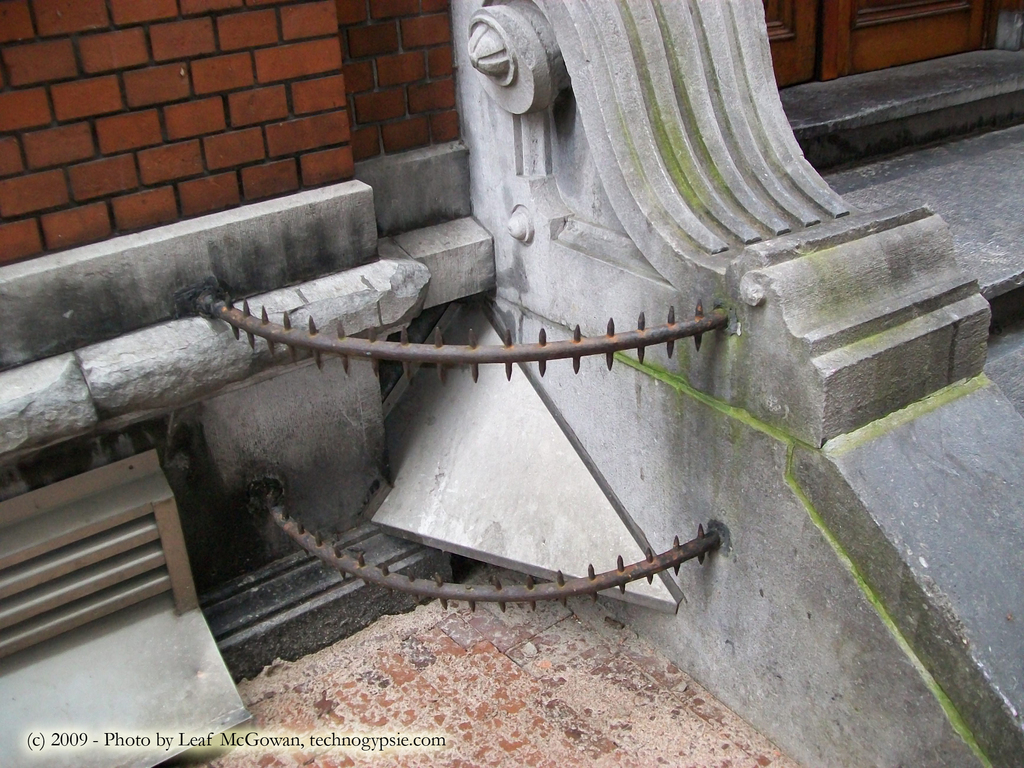
unpleasant to touch
After carefully examining a railing on a very tall bridge in Vevey, Switzerland, we noticed it is covered with a rough material, something of a sand-paper quality. The reason for using this material might be to discourage suicidal attempts, as the contact with the railing is already so unpleasant. On the other side, the reason might be purely hygienic, for it probably gets less dirty when nobody is touching it.
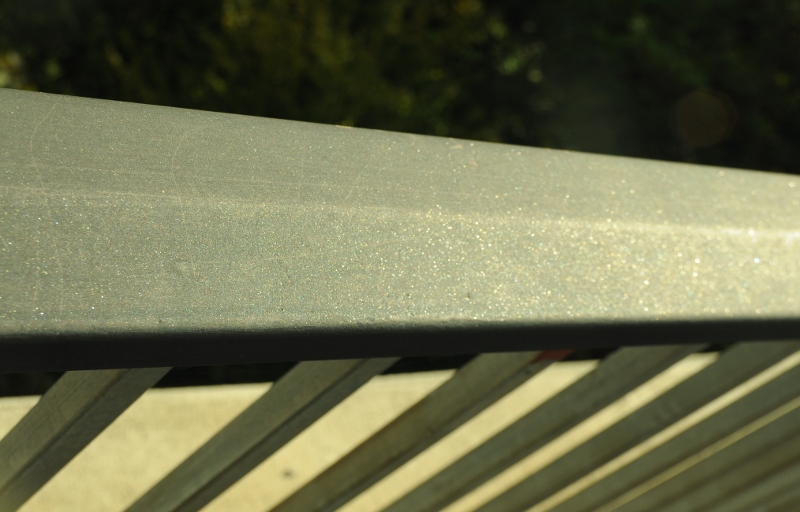
Railing on a bridge in Vevey, Switzerland that is unpleasant to touch; September 2011
pink light
Pink lights have recently appeared as a measure against teenage loitering, because they are supposed to highlight skin blemishes. When they were first installed by a resident’s association in Mansfield, UK in 2006, even though many sarcastic views were expressed in media, to the Mansfield residents it seemed like a cheap and doable solution.
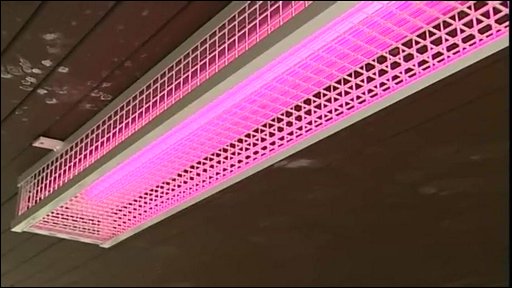
http://news.bbc.co.uk/2/hi/uk_news/england/lancashire/6197652.stm
blue light
Blue neon lights were successfully used in public bathrooms and publicly accessible toilets, as a means of preventing drug users from injecting themselves. Because it makes veins harder to see, it is expected that drug users will stop using these bathrooms for the aforementioned purpose.
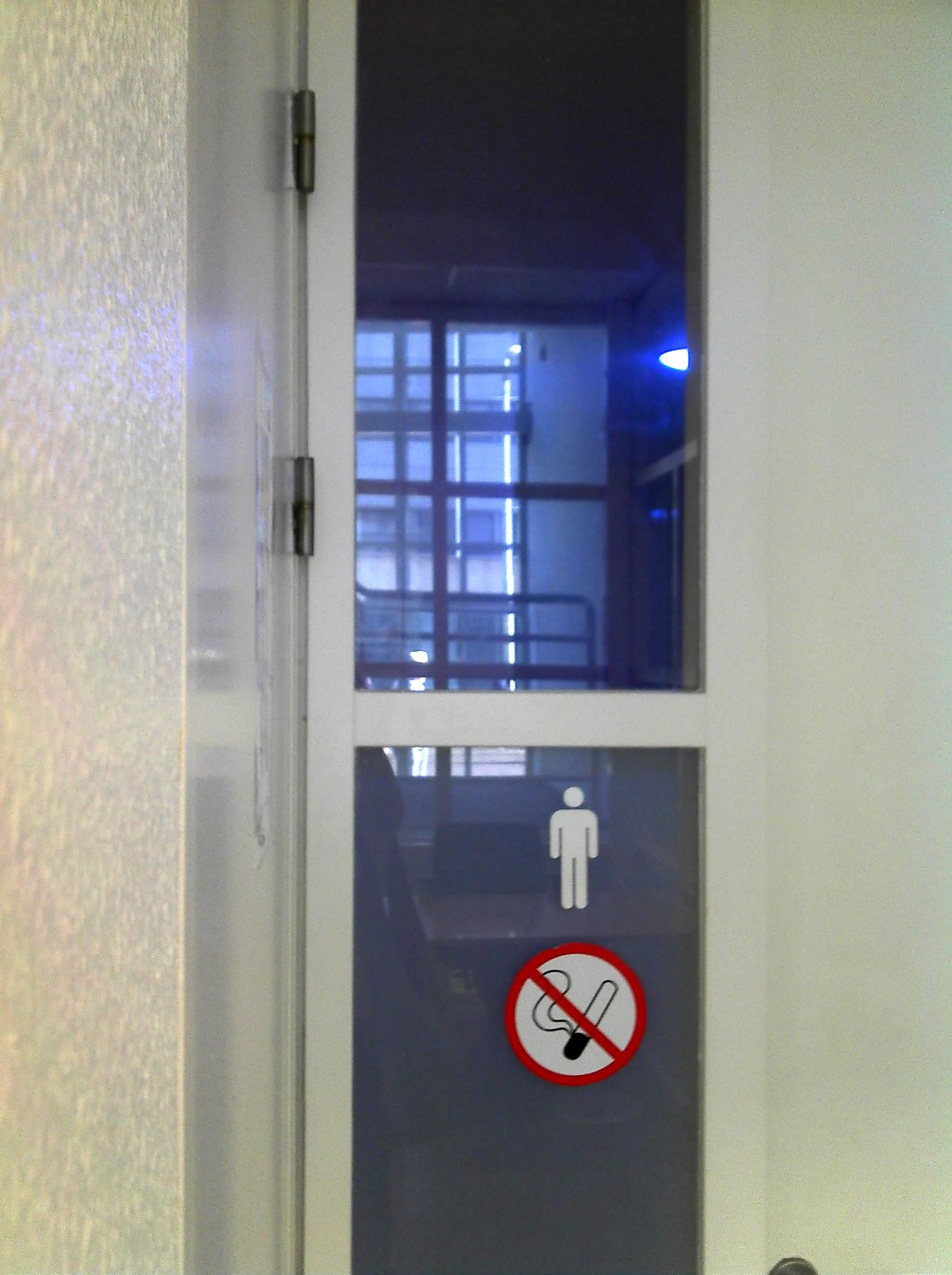
Blue lights used in the public toilet in The Hague City Hall; men's toilet
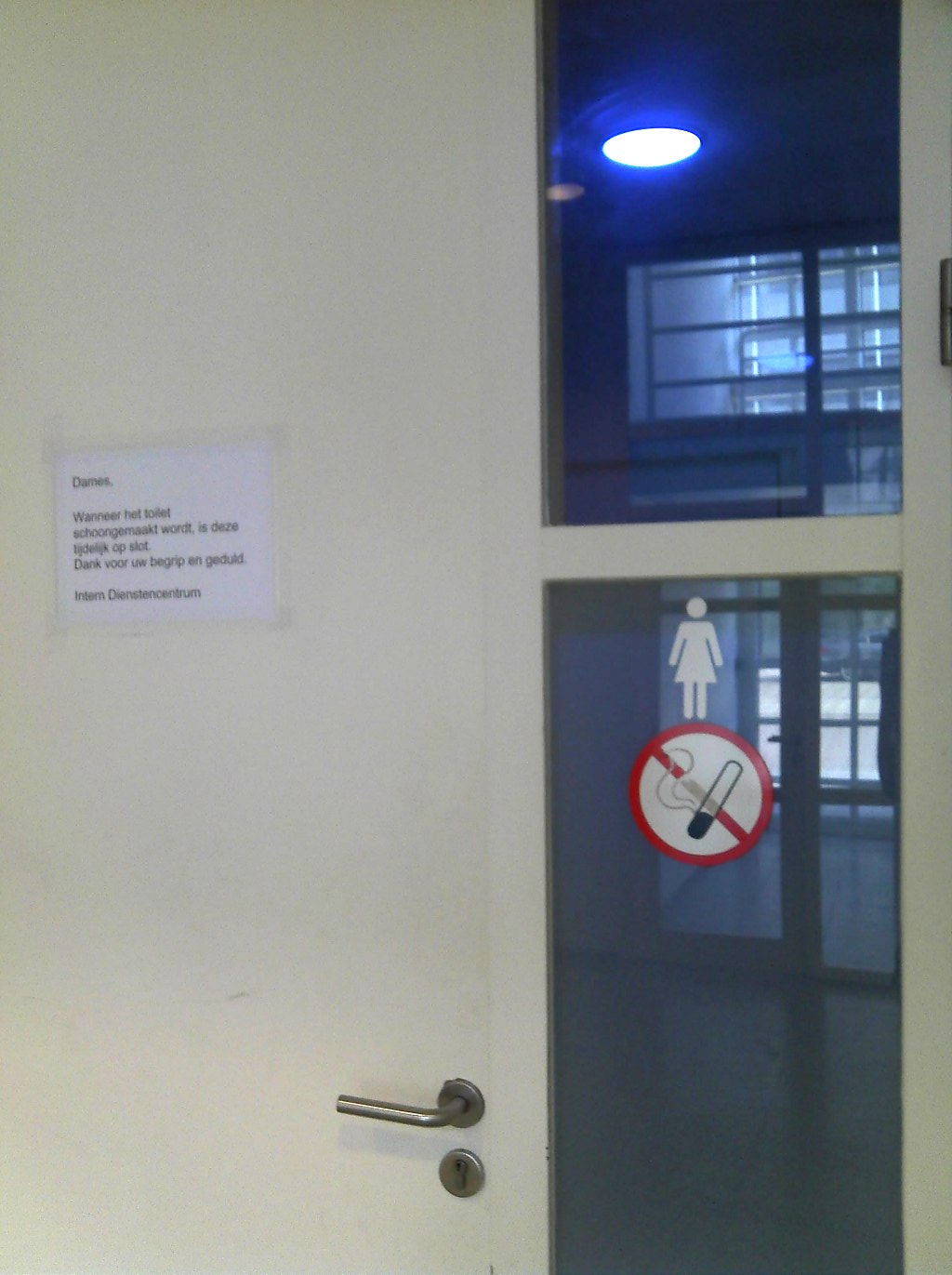
Blue lights used in the public toilet in The Hague City Hall; women's toilet
further reading:
http://www.theargus.co.uk/archive/1999/02/18/The+Argus+Archive/
http://news.bbc.co.uk/2/hi/uk_news/england/cambridgeshire/3147170.stm
the mosquito device
The Mosquito device functions as a high frequency buzz (17,4KHz) is employed to keep away teenagers from gathering in publicly accessible spaces like shopping malls, street corners, courtyards, etc. Mosquito is supposed to target specifically the population under 25. Unlike their older cohabitants, the young population should be able to hear the repelling sound buzz at 5 dB above background noise levels. In practice this age border does not function exactly as intended.
The Mosquito device patented in 2005 by Howard Stapleton, was installed in the last few years in numerous spots in European and American cities, where young people would gather and exhibit the so-called ‘anti social behaviour’.
It turned out some older (more than 25 years old) people can hear the tone but at the same time not all teenagers can hear it. It became popular amongst teenagers as a ring tone for cell phones during classes, especially the ones given by elderly teachers.
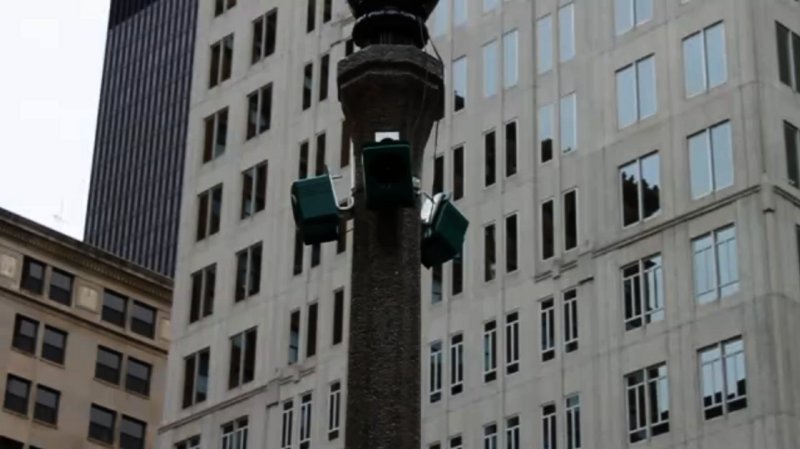
Mosquito devices mounted on a street light pole in downtown Chicago; courtesy of Dave Hoffman
http://en.wikipedia.org/wiki/The_mosquito
http://news.bbc.co.uk/2/hi/uk_news/wales/south_east/4415318.stm
un·pleas·ant Adjective /ˌənˈplezənt/
towards a definition
Unpleasant design is an accumulation of urban phenomena in which social control and its inherent design are playing a significant role in the way we perceive and engage in public, semi-public and semi-private space. This page aggregates appearances of urban design processes and tools aimed specifically at people to make them feel uncomfortable or interfere with their general behaviour within certain frameworks; hence its research title “unpleasant design”. These implementations range from architectural interventions within the built environment, to electronic devices modifying and diffusing our lived environment. Our claim is that designing “unpleasant design” is an intricate process. It is planned in detail and its execution is delicate.
un·pleas·ant in the 18th century
When talking about Unpleasant Design as an urban phenomenon, we like to refer to historical examples from the times when the meaning of ‘urban’ was being defined. For example, one can find relevant the following excerpt from the book The Bridge on the Drina by Yugoslav writer Ivo Andrić (p. 112). He talks about an ongoing negotiation process between the authorities trying to implement systematic illumination on the streets of the old casbah, and the citizens who were used to spending their evenings on the bridge, dicsussing daily topics in darkness.
